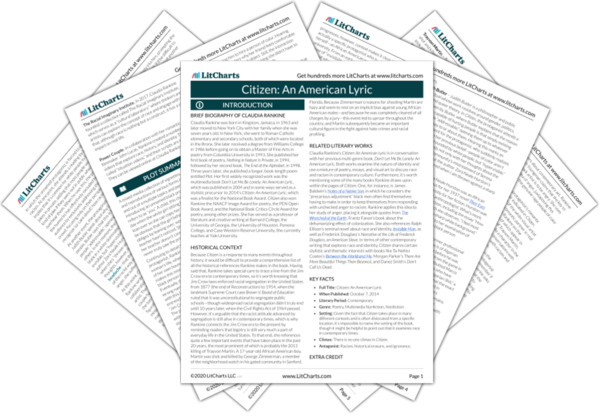Because professional tennis helps Rankine exemplify how injustice often plays itself out, the sport comes to represent the unfair standards to which society holds people of color. The protagonist tracks Serena Williams’s career, at first finding herself surprised that Williams is able to withhold her anger. Over time, though, Williams becomes less and less able or willing to conceal her frustration when umpires and the general tennis community treat her unfairly. When she finally puts this anger on full display during the 2009 US Open, the protagonist is awed by the storied athlete’s ability to respond with genuine emotion to injustice and racism. And yet, the protagonist also notes that this anger only makes Williams’s life harder, since people say disparaging things about her in the aftermath of her “outburst” (not to mention the fact that she is fined $82,500). Several years later, though, Williams wins two gold medals at the Olympics and does a three-second celebratory dance—a dance for which the entire tennis community criticizes her, calling her “classless” for “Crip-Walking all over the most lily-white place in the world.” This attitude blatantly uncovers the racial biases against Williams, but the tennis world doesn’t stop to consider this. Simply put, then, there is effectively nothing Williams can do to avoid criticism and mistreatment. If she gets angry at her own mistreatment, her behavior is deemed inappropriate, but her happiness elicits the same response. By spotlighting this infuriating dynamic, Rankine uses the tennis community’s biases and rigidity to embody the lose-lose atmosphere in which people of color often find themselves, revealing that society’s power structures are stacked against black people—a dismal reality that makes it extremely difficult to overcome racism and prejudice.








